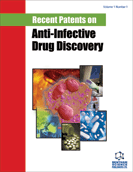Abstract
Purpose: To provide an updated insight of concepts regarding the overview, epidemiology, risk factors, clinical manifestations, diagnosis, treatment and prevention of ocular toxocariasis. Design: Perspective of literature review. Methods: Review and synthesis of literature about toxocariasis, with interpretation and perspective. A literature search for “ocular toxocariasis” was performed using PubMed, ScienceDirect, Scopus, SciELO and LILACS databases. Results: Mild to moderate infections are frequently reported in ocular toxocariasis which usually occurs in children and typically presents as unilateral vision impairment, blindness is common and could present invasion of the retina. There are three groups of presentation of toxocariasis (according to the physical examination): chronic endophthalmitis, posterior granuloma and peripheral granuloma. Standard diagnosis of ocular toxocariasis is based on the identification of clinical signs, supported by additional diagnostic methods. Regarding treatment, there is no commonly accepted regimen but most of the authors prefer to use steroids and anthelminthic agents, but nowadays there are no standardized parameters in terms of dosage, duration and route of administration. Surgery has been recommended in some cases. Conclusion: Toxocariasis is still a problem of public health, particularly in developing countries with an increasing epidemiological burden in terms of morbidity and mortality and most of the authors agree on the utmost relevance of its prevention. Clinical experience and suspicion of ophthalmologists make an important role in its diagnosis, but always with supportive diagnostic methods. Additional studies should explore new therapeutic options for toxocariasis.
Keywords: Epidemiology, ocular, ophthalmology, toxocariasis, Toxocara.
 84
84 7
7 1
1 1
1





















